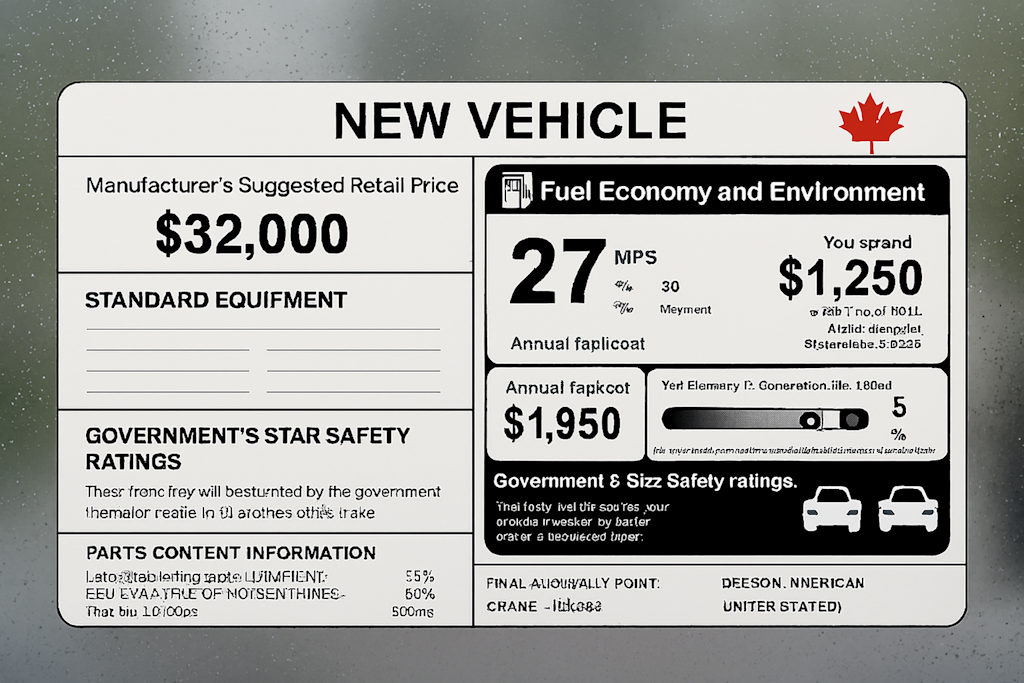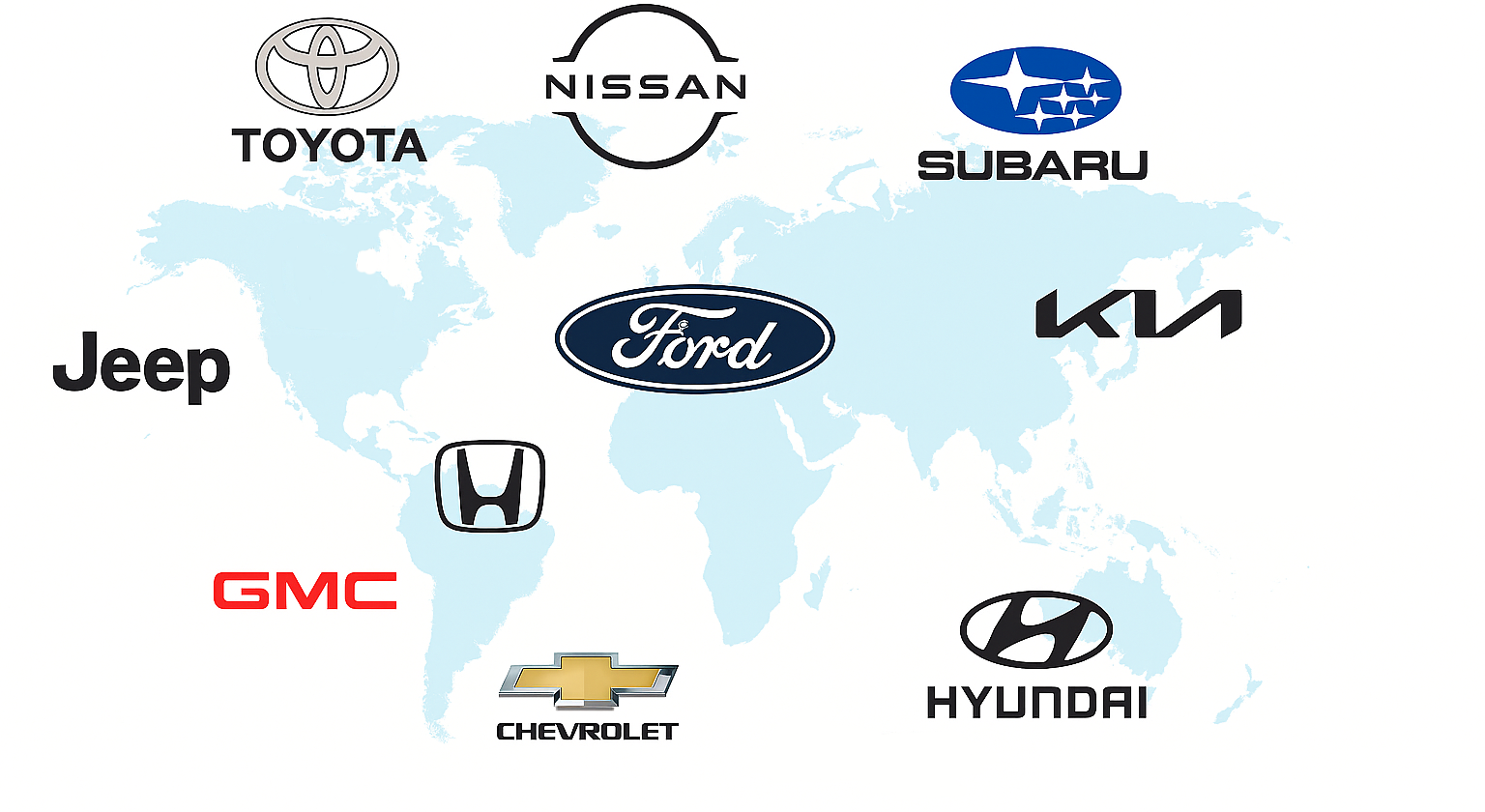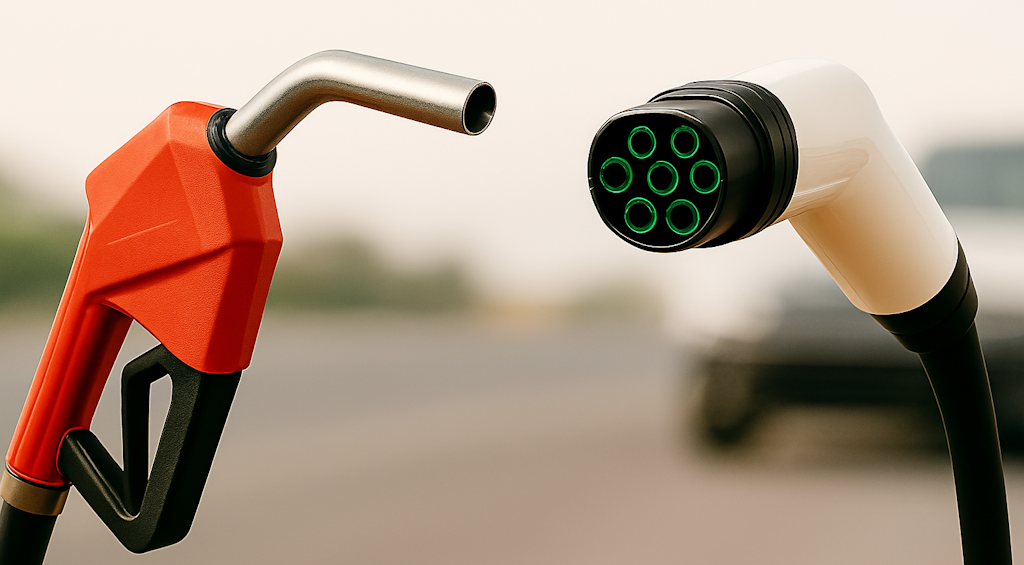
How to Decode a Window Sticker in Canada
What Is a Car Window Sticker in Canada?
If you’re shopping for a new car in Canada, one of the most important tools you have is the vehicle window sticker, also called the vehicle information label or manufacturer’s label.
Canada doesn’t have one universal format for window stickers, but all new vehicles must display key information including price, features, fuel economy, and safety compliance.
Why It Matters
Understanding how to read this sticker is one of the easiest ways to shop smarter and avoid surprises at the dealership.
It will help you:
- Know the real cost of the vehicle (before taxes)
- Spot add-ons or markups
- Compare fuel economy ratings
- Ensure the features match what you’re being offered
What’s on a Canadian Car Window Sticker? Here’s a breakdown of what you’ll typically see on a new vehicle sticker in Canada and what it tells you:
MSRP (Manufacturer’s Suggested Retail Price)
This is the starting price for the base trim level. It doesn’t include options, destination charges, or dealer fees, so be prepared for the final price to be higher.
Optional Equipment and Packages
This section lists factory-installed add-ons, such as:
- Premium paint
- Navigation
- AWD
- Safety packages
These often have individual pricing and will help you understand what’s included and whether it’s worth the cost.
Freight & PDI (Pre-Delivery Inspection) Fees
Freight charges also known as destination charges, cover shipping the vehicle from the factory to the dealership. PDI is the dealer’s fee to inspect and prep the vehicle for delivery.
Combined, these can add $1,800–$2,500+, depending on the brand. These are usually not negotiable.
Total Selling Price
This line shows the MSRP + options + freight/PDI, and is often what you’ll see advertised in Canadian dealership listings. It does not include taxes or licensing fees, which vary by province.
Fuel Economy Ratings (EnerGuide Label)
Look for an [Energuide] ( https://natural-resources.canada.ca/energy-efficiency/transportation-energy-efficiency/personal-vehicles/energuide-vehicles) label, this is a federally regulated label that shows:
- Estimated fuel use (L/100 km city, highway, combined)
- Estimated annual fuel cost
- Vehicle class and engine type
Electric and hybrid vehicles will also show range, charging estimates, and energy consumption.
Safety Compliance & Transport Canada Certification
This section confirms the vehicle meets Canadian safety standards. You may also see a VIN and the manufacturing origin (e.g. “Made in Japan” or “Assembled in Ontario”).
VIN, Trim, Model Year, and Engine Specs
Always match the VIN (Vehicle Identification Number) on the sticker to the physical vehicle. This section verifies engine size, drivetrain (FWD/AWD), and the exact trim level.
Beware of Dealer Addendum Stickers
Some dealerships add a second sticker with extra charges for:
- Tire & rim protection
- Nitrogen-filled tires
- Paint protection packages
- Admin/documentation fees
These add-ons are not mandatory, so ask if you can remove or negotiate them.
Tips for Buyers in Canada
- Always ask for the “out-the-door” price, including tax and licensing
- Compare prices on the manufacturer’s Canadian website
- If financing or leasing, ask how add-ons impact your monthly payment
- Download our free checklist below for in-dealership use
Related Articles

Top 10 Car Brands and Where They're Manufactured
The top 10 cheapest cars on the market today in Canada.

The Ultimate New Car Buying Checklist: What to Know Before You Visit a Dealership
Before you step foot into a dealership, a little preparation with our checklist can save you time, stress, and anxiety.

Gas vs. Hybrid vs. EV: What Should You Buy in 2025?
How do you choose between Gas, Hybrid or electric? This simple breakdown will show you the pros and cons of each vehicle so you can make the best choice for your needs.
Stay Informed About Cars
Get the latest car news, reviews, and buying tips delivered to your inbox.